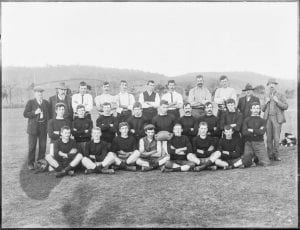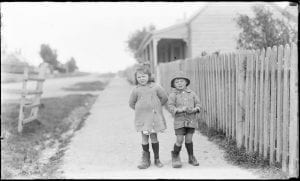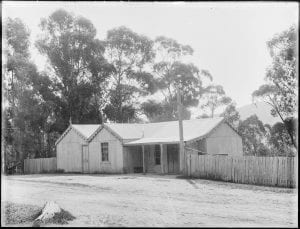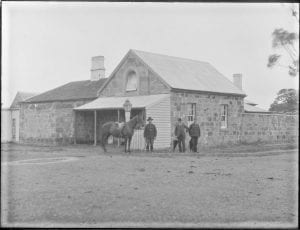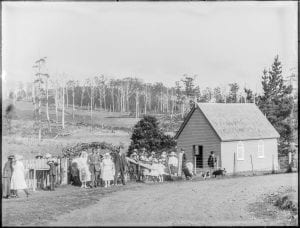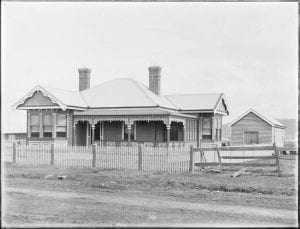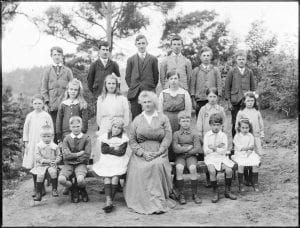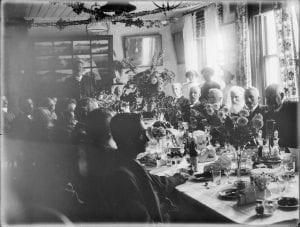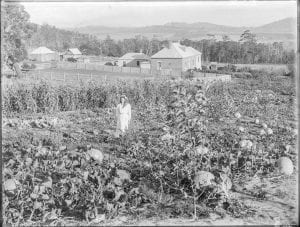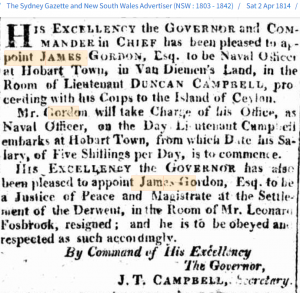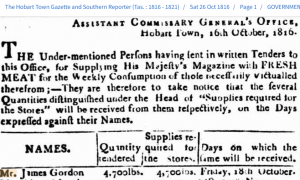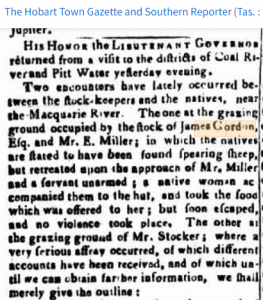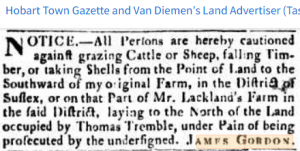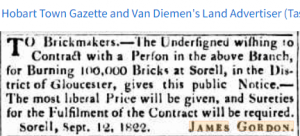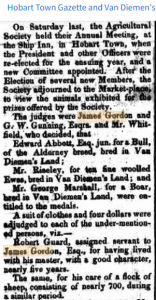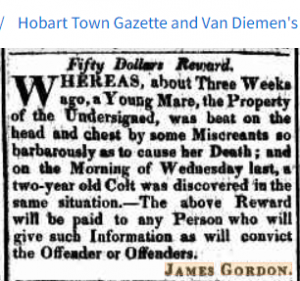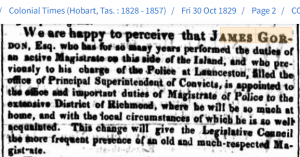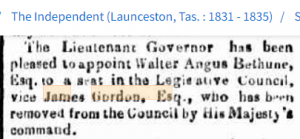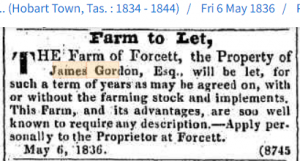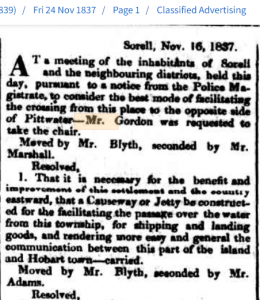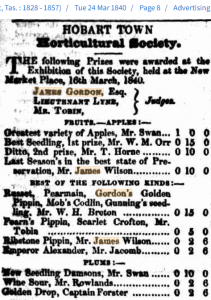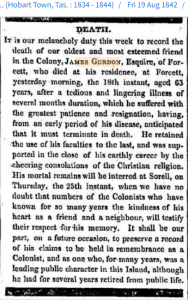Violet Emma Alomes was born 15 April 1886 to Walter Alomes and Emma Jane Parker at Forcett. She had 7 other siblings.
According to her daughter in 1975, her mother collected tin foil and used stamps as a child so she could help others through the Dr Barnardo’s homes in London. During the wars her mother knitted scarves and donated food parcels.
At age 23, Violet married Amos Vimpany at St David’s Cathedral.
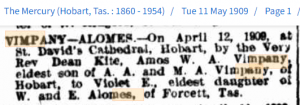
In the late 1920’s, Violet attended Hobart Technical College where she studied art under the wing of Lucien Dechaineaux. In the late 1930’s she studied under Max Meldrum in Melbourne.
In 1934, one of Violet’s paintings Auriculas was shown at the Women Painters exhibition in Sydney. She used oils and watercolours as well as etching in her career. Violet exhibited in New York in 1939 at the International Women: Painter, Sculptors, Gravers exhibition.
Violet was on the council for the Art Society of Tasmania and would often present their report at the National Council of Women of Tasmania annual meetings.
In 1938, Violet was involved in a contempt of court case with the Lord Mayor (J Soundy) and Mrs Olive Calvert.
Violet shared a studio with Florence Rodway, Mildred Lovatt and Edith Holmes who were also exhibitors as many Art Society events.
In 1940, Mrs A Vimpany was honoured at the National Council of Women meeting. She was a definite champion of women’s rights and a philanthropist and was a member of many societies in Tasmania.
In The Mercury in Margot’s Notebook section, there is a great description of clothing worn by Violet.

In 1944, at the Art Society’s 60th anniversary, Violet exhibited a portrait.
Her husband Amos, a well known stonemason, passed in 1945 leaving many memorials incomplete. Violet decided she would need to learn the skills and techniques so she could finish his work.
At the 1947 Art Society exhibition, held at the Tasmanian Museum and Art gallery, there were few portraits hung, but Violet had one she had painted of “Jenny”, the librarian of the Art Society.
To find out more about Violet’s life, read this article written by her daughter Gwen which was published in The Australian Women’s Weekly magazine in 1975.
Violet passed on 2 March 1979 and is buried in the cemetery at Forcett.
